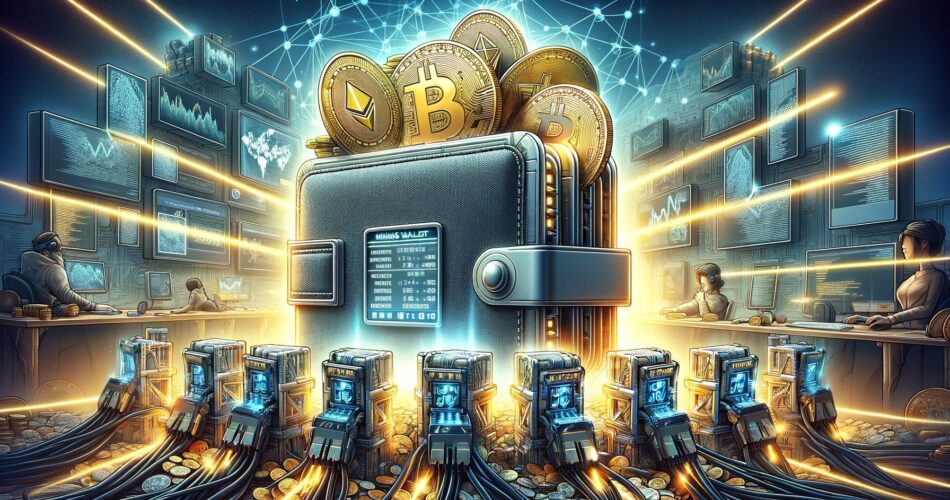WoolyPooly isn’t just another node in the crypto network; we’re the miners’ library, a repository of insights and practical wisdom. Our articles on Ethereum, Kaspa and Ravencoin wallets are not just reads; they’re blueprints for securing your digital gold. Let’s talk about mining wallets now.
Table of Contents
Understanding Mining Wallets
Mining wallets are the custodians of your digital earnings, a critical component in the cryptocurrency ecosystem that ensures the fruits of your mining labor are well-protected.
The Role of Mining Wallets
Mining wallets go beyond mere storage; they are active participants in the mining process, receiving and managing the cryptocurrency you earn.
From Basic Safeguards to Fort Knox
Security is paramount in choosing a mining wallet. From basic software protections to the impenetrable layers of hardware wallets, your choice dictates your peace of mind.
Seamless Sync with Mining Operations
A good mining wallet doesn’t just secure your coins; it integrates seamlessly with your mining operations, ensuring efficiency and ease of access to your assets.
By understanding these facets of mining wallets, you’re better equipped to choose the right one that aligns with your mining goals and security needs.
Types of Mining Wallets
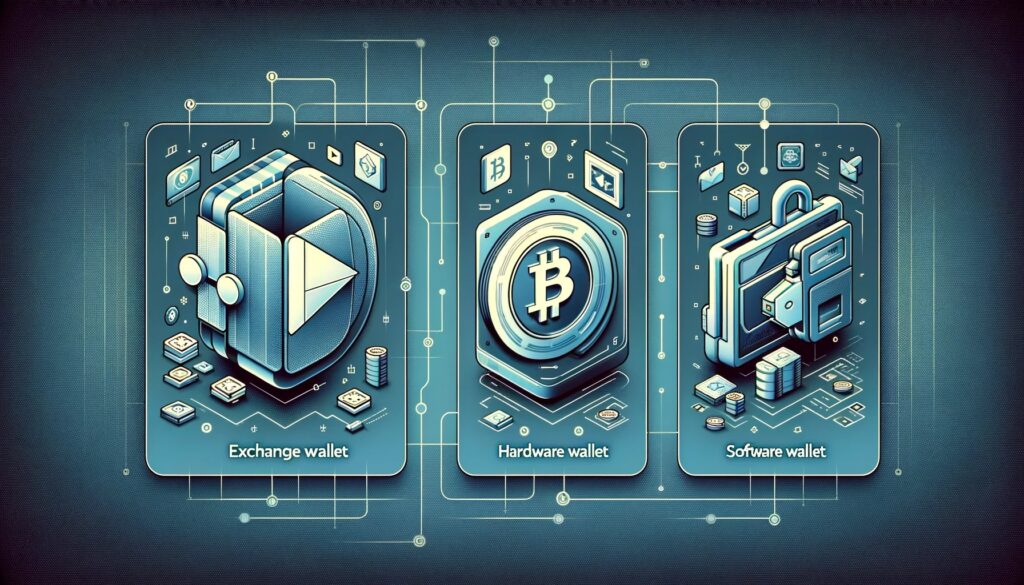
Mining wallets come in various forms, each with its unique features and levels of security. Understanding the differences is key to selecting the right wallet for your mining activities.
Exchange Wallets. The Trader’s Hub
Exchange wallets are provided by cryptocurrency exchange platforms. They are online-based and offer convenience for traders who frequently buy, sell, or trade cryptocurrencies. However, they may be less secure than other options because they are often targeted by hackers and you do not control your private keys.
Hardware Wallets. The Vault of Digital Assets
Hardware wallets are physical devices that store your cryptocurrency offline, making them immune to online hacking attempts. They are considered the most secure type of wallet, ideal for storing large amounts of cryptocurrencies long-term.
Software Wallets. The Accessible Digital Wallets
Software wallets are applications that can be installed on your computer or smartphone. They offer a balance between convenience and security. There are two main types:
Multi-Coin Wallets. The Versatile Option
These wallets support multiple cryptocurrencies, allowing you to manage different types of coins in one place. They are convenient for miners who mine various cryptocurrencies.
Specific Coin Wallets. The Specialized Storages
Specific coin wallets are designed for a single cryptocurrency. They are optimized for the coin they support, offering features and functionalities tailored to the specific needs of that currency’s network.
For a more comprehensive understanding of the types of crypto wallets and their nuances, you can explore our in-depth article at WoolyPooly: Types of Crypto Wallets.
Detailed Chart of Mining Wallets
| Wallet Type | Name | Supported Coins | Security Level | Features |
|---|---|---|---|---|
| Exchange | MEXC Wallet | Multiple | Moderate | Quick trades, user-friendly interface |
| Hardware | Ledger Nano S | Over 1,500 coins | Very High | Offline storage, robust security features |
| Software | Exodus | 100+ including mining | High | Multi-coin support, in-app exchanges |
| Specific | Electrum | Bitcoin | High | Bitcoin-optimized, feature-rich |
Top Wallets for Mining
Detailed Chart of Top Mining Wallets
| Name | Wallet Type | Supported Coins | Security Level | Key Features |
|---|---|---|---|---|
| Mexc | Exchange | Multiple | High | Direct trading, robust security |
| CoinEx | Exchange | Multiple | High | Wide coin support, user-friendly |
| Exodus | Software | 100+ | High | Intuitive UI, in-wallet exchanges |
| Zelcore | Software | Hundreds | High | Multi-asset support, exchange integration |
| Trust Wallet | Mobile | Thousands | High | Mobile convenience, secure storage |
| Specific Coin Wallet | Varies | Coin-specific | Varies | Optimized for specific coins |
Mexc Exchange Wallet
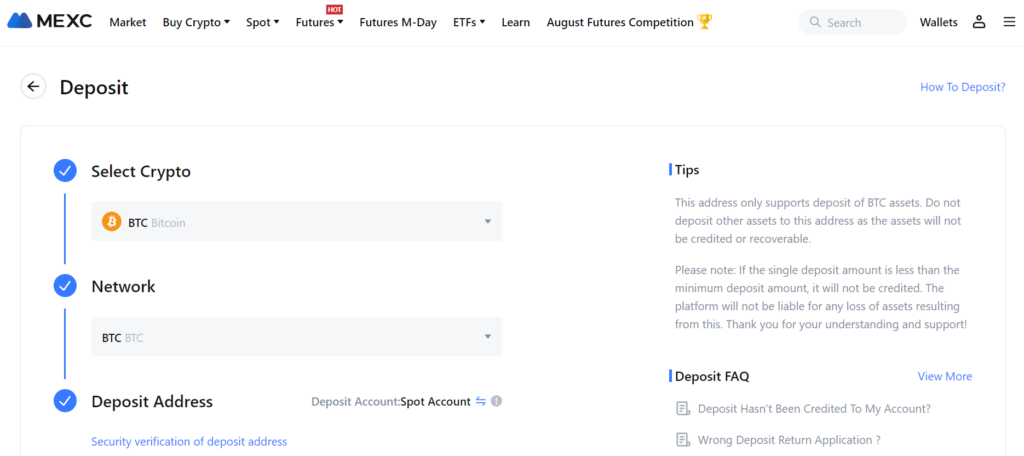
Mexc Exchange Wallet is a popular choice for miners who want to have immediate access to trade their mined coins. It supports a wide range of cryptocurrencies and offers robust security measures to protect users’ assets.
Pros and Cons
| Pros | Cons |
|---|---|
| Direct access to markets for trading | Not in full control of private keys |
| High liquidity for quick transactions | |
| Strong security protocols | |
| No KYC under 30 BTC per day |
CoinEx Exchange Wallet
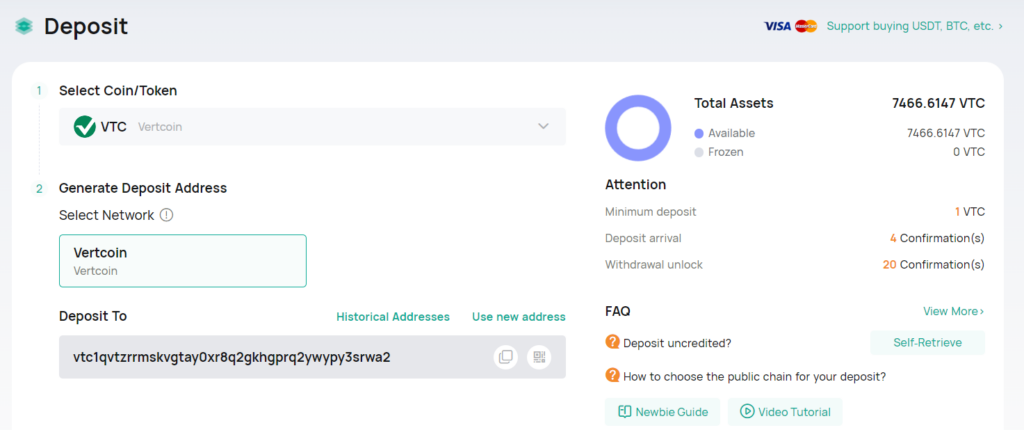
CoinEx is favored for its user-friendly interface and the variety of coins it supports. It’s designed for both novice and experienced miners who appreciate seamless trading after their mining sessions.
Pros and Cons
| Pros | Cons |
|---|---|
| Supports a wide array of cryptocurrencies | Control of private keys lies with the exchange |
| User-friendly interface | |
| Competitive trading fees | |
| No KYC under 10k USDT per day |
Exodus Wallet
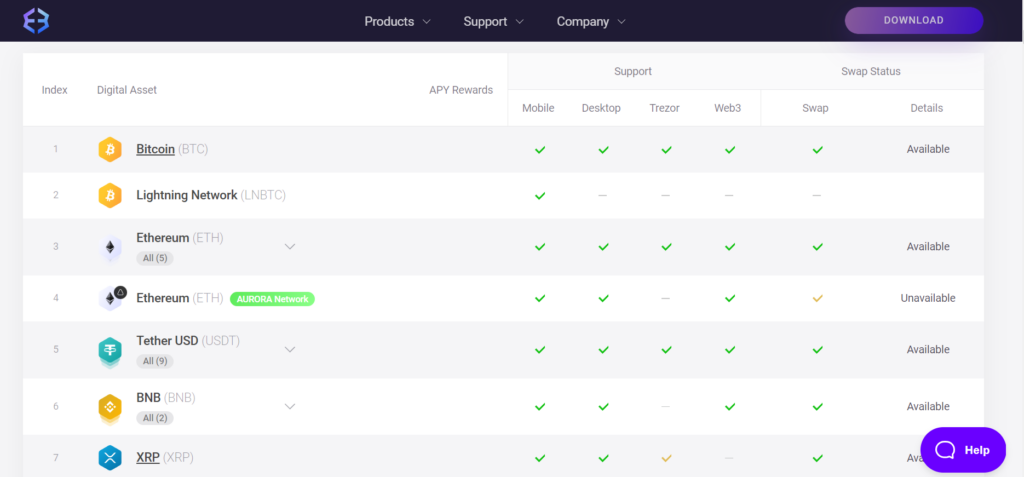
Exodus is a software wallet known for its aesthetic interface and ease of use. It supports over 100 different cryptocurrencies, including many that are commonly mined, and it allows users to exchange coins within the wallet.
Pros and Cons
| Pros | Cons |
|---|---|
| Intuitive user interface | Not open source |
| Supports over 100 cryptocurrencies | Higher fees for the built-in exchange service |
| Built-in exchange feature | Less secure than hardware wallets |
Zelcore Wallet

Zelcore offers a suite of features that cater to miners looking for a multi-asset wallet. It supports hundreds of coins and integrates with various exchanges for easy trading.
Pros and Cons
| Pros | Cons |
|---|---|
| Multi-asset support and exchange integration | Can be complex for beginners |
| Allows for multiple accounts | Some features require a subscription |
| High level of customization | May be overwhelming due to feature richness |
Trust Wallet
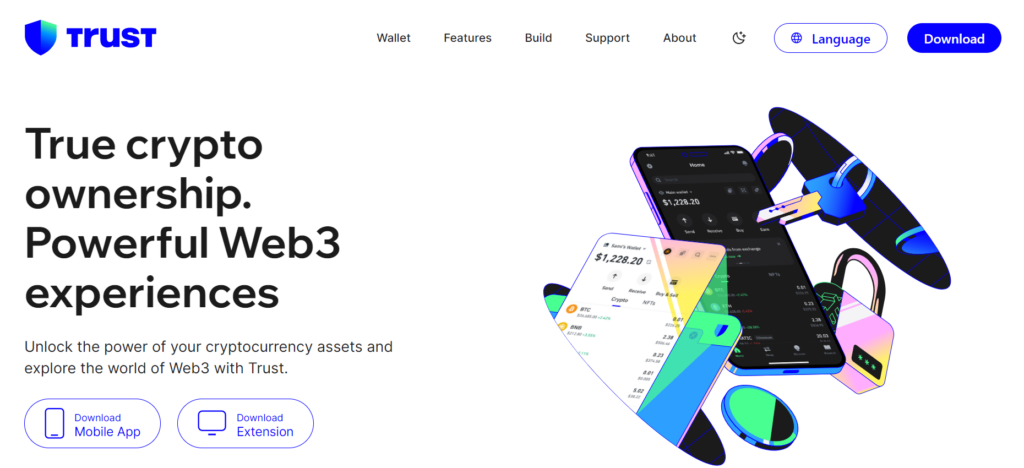
Trust Wallet is a browser extension and mobile wallet app that provides a secure and straightforward way to store a wide variety of cryptocurrencies. It’s perfect for miners who prefer managing their assets on their smartphones.
Pros and Cons
| Pros | Cons |
|---|---|
| Mobile-first, convenient for on-the-go | Mobile wallets can be vulnerable if device security is compromised |
| Supports thousands of assets and dApps | No desktop version for those who prefer PC use |
| User-controlled private keys | Relatively less secure than hardware wallets |
Specific Coin Wallet (Varies by Coin)
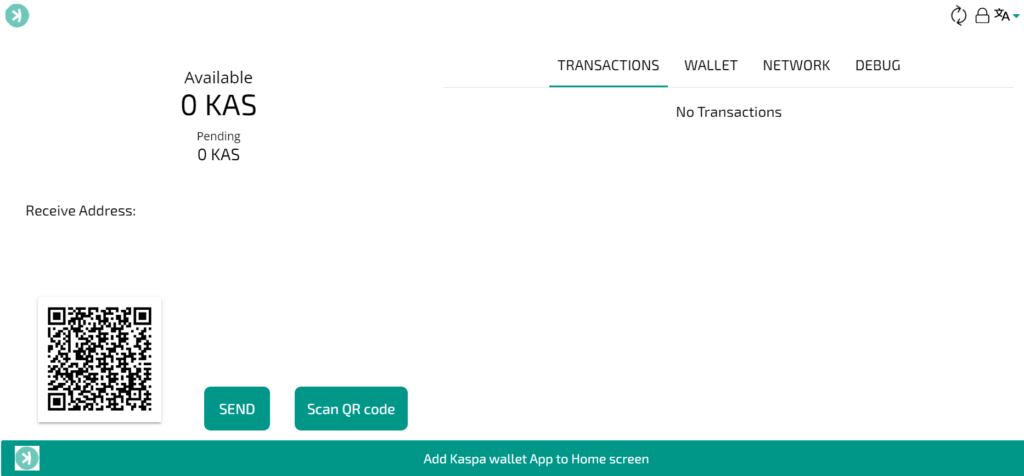
For those who mine specific coins (like Kaspa coin), the official wallets provided by the coin’s developers often offer the best support and security. These can usually be found on the official website of the cryptocurrency.
Pros and Cons
| Pros | Cons |
|---|---|
| Tailored features for specific cryptocurrencies | Only supports one cryptocurrency |
| Often the most secure option for a single currency | Not as versatile for those who mine multiple coins |
| Direct support from the coin’s developers | May not have the same features as multi-coin wallets |
Setting Up Your Mining Wallet
Setting up your mining wallet is a critical step in your cryptocurrency journey. It’s the process where security meets accessibility, ensuring that your mined assets are not only well-protected but also readily available for your use. Here’s a step-by-step guide to get you started:
Choosing the Right Wallet
Before you dive into the setup process, you need to choose a wallet that aligns with your mining goals and preferences. Consider the type of cryptocurrency you’re mining, the volume of your mining operations, and your plans for the mined currency. Whether it’s immediate trading on an exchange, secure long-term storage, or frequent transactions, there’s a wallet tailored to your needs.
Download and Installation
Once you’ve selected the appropriate wallet, the next step is to download it from a trusted source. For software wallets, this will be their official website or app store. Hardware wallets will come with instructions for setting up and connecting to your computer.
Secure Setup
Security is paramount when setting up your wallet. Create a strong, unique password and write down your recovery phrase. Store this phrase in a secure location—this is your last line of defense if you forget your password or lose access to your wallet.
Receiving Mining Rewards
To receive your mining rewards, you’ll need to link your wallet to your mining pool or software. This usually involves entering your wallet’s address into the mining pool’s dashboard or software settings. Ensure that the address is entered correctly to avoid any loss of funds.
Backup and Recovery
Back up your wallet regularly, especially if you update your transaction history frequently. Use the backup features provided by your wallet, which may include backing up the wallet file or securing your seed phrase.
Regular Updates
Keep your wallet software updated to the latest version. Updates often include security enhancements and new features that can improve your mining and wallet management experience.
Multi-Factor Authentication
If available, enable multi-factor authentication (MFA) for an added layer of security. This typically involves a code generated on your smartphone or a hardware token that must be entered in addition to your password.
By following these steps, you can set up a mining wallet that not only secures your digital currency but also integrates seamlessly with your mining activities. Remember, the setup is just the beginning—maintaining and managing your wallet is an ongoing process that requires attention and care.
Troubleshooting Common Mining Wallet Issues
Even with the most meticulous setup, miners can encounter issues with their wallets. Knowing how to troubleshoot these problems can save you time and safeguard your assets. Here’s a guide to overcoming some of the most common hurdles:
Wallet Not Syncing
When your wallet isn’t syncing, it’s like being out of tune with the blockchain orchestra. First, check your internet connection to ensure it’s stable and fast enough. If that’s not the issue, look for any updates to the wallet software, as syncing problems can often be resolved with the latest version. Sometimes, simply restarting the wallet or your device can re-establish the connection.
Lost Transactions
If a transaction is not showing up, it might just be taking its time. Cryptocurrency transactions can be delayed due to network congestion. Check the transaction ID on a blockchain explorer to see its status. If it’s confirmed on the blockchain but not appearing in your wallet, you may need to refresh or resynchronize your wallet.
Forgotten Passwords or Lost Access
Forgetting a password can induce panic, but there’s often a solution. If you’ve lost access to your wallet, the recovery phrase or seed key you created during setup is your lifeline. Use this to restore your wallet on another device. If you’ve lost your recovery phrase, the situation becomes more complex, and often, there’s little that can be done, highlighting the importance of keeping your recovery phrase in a secure and memorable place.
Wallet Security Breaches
If you suspect a security breach, immediately transfer your funds to a new wallet with a different seed phrase. Then, conduct a thorough security check on your devices to ensure they’re free from malware. Moving forward, enhance your security practices by using hardware wallets for significant amounts of cryptocurrency and keeping software wallets on devices with robust security measures.
Hardware Wallet Connectivity Issues
Hardware wallets can sometimes fail to connect to your computer or smartphone. Check all physical connections first, such as USB cables. If the problem persists, try connecting to a different port or device. Ensure that the hardware wallet’s firmware is up to date, as outdated firmware can cause compatibility issues.
Multi-Factor Authentication (MFA) Problems
MFA issues can lock you out of your wallet. If you’re using an authenticator app, ensure that the time on your device is correct, as time-based one-time passwords (TOTP) rely on it. If you’ve lost your MFA device, use your backup codes or contact customer support if you’ve set up that option.
Conclusion
Your mining wallet is more than just a tool; it’s your personal vault, your interface with the blockchain, and your portfolio manager. As we’ve navigated through the various types of wallets, from the convenience of exchanges to the fortress-like security of hardware options, and the versatility of software wallets, it’s clear that the choice of a mining wallet is as personal as it is technical.
The journey doesn’t end at setup. The true test of a miner’s mettle lies in ongoing wallet management—staying vigilant against security threats, keeping abreast of updates, and adapting to the ever-changing landscape of cryptocurrency.
As you forge ahead, remember that your mining wallet is the bedrock of your mining operation. It’s the final destination for your mined coins and the starting point for your financial ventures within the crypto universe. Choose wisely, manage diligently, and mine with confidence, knowing that your digital assets are as secure as they are accessible.
In this dynamic domain, WoolyPooly stands with you, offering the tools, knowledge, and support to help you secure your slice of the crypto pie. Whether you’re a seasoned miner or just starting to chip away at the blockchain, your wallet is your constant companion—keep it well-tended, and it will serve you well on your journey to crypto prosperity.
FAQs
What is the safest type of mining wallet?
Hardware wallets are widely regarded as the safest option due to their offline storage capabilities.
Can I use one wallet for different cryptocurrencies?
Yes, multi-coin wallets are designed to support various cryptocurrencies.
How do I secure my mining wallet?
Use strong, unique passwords, enable two-factor authentication, and consider a hardware wallet for enhanced security.
